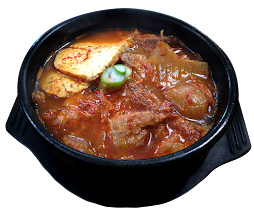Top Korean Comfort Foods and What They Say About Our Culture
🥣 Top Korean Comfort Foods — And Why They Matter So Much to Us
Have you ever had a bite of something that instantly made you feel safe?
For me, that’s what Korean comfort food does. It doesn’t just fill your stomach—it fills your heart.
Growing up in a Korean household, comfort food wasn’t just “what we ate when we were hungry.”
It was what came out when we were tired, sick, homesick, or just needed a little emotional hug.
Let me take you through a few dishes that, to this day, bring me the most comfort—and share a little bit about what they mean in Korean culture.
🍲 Jook (Rice Porridge) — Mom’s Go-To Cure for Everything
If I had a dollar for every time my mom made jook when someone in the house was sick, I’d probably be writing this from a beach house.
It’s so simple: rice, water, maybe some chicken or abalone if you’re lucky.
But the warmth of that porridge isn’t just in the bowl—it’s in the way someone made it for you.
No strong flavors, no spice—just soft, warm, healing food.
In Korean culture, this is how we say “I care about you” without using any words.
There’s something so gentle and tender about feeding someone jook. It’s the ultimate act of quiet love.
🔥 Kimchi Jjigae — The Loud, Spicy Hug You Didn’t Know You Needed

Image source: Pixabay

On cold days—or honestly, on any day—I crave kimchi jjigae.
Made with well-fermented kimchi, a bit of pork or tuna, tofu, and onions, it bubbles away on the stove and fills the house with this deep, savory smell that just feels like home.
What I love about this dish is how it turns something old (kimchi that’s too sour to eat raw) into something rich and bold.
It’s a dish that says, “Even when life gets a little too fermented, you can still turn it into something beautiful.”
Very Korean, right?
🧧 Tteokguk — The Taste of New Year, Family, and Growing Older
Every Korean kid hears this at some point:
“You’re not a year older until you eat your bowl of tteokguk.”
This soup with sliced rice cakes is traditionally eaten on Seollal (Korean New Year), and for me, it means family.
Waking up early, bowing to elders, and sitting together to eat this clean, white soup—it’s a moment of peace and connection.
Even now, living in the U.S., I make it every New Year’s Day.
It doesn’t matter if I’m busy or tired. That bowl of soup grounds me. It reminds me where I came from.
🌱 Doenjang Jjigae — The Earthy Stew That Tastes Like Everyday Life

Image source: Pixabay

This one might not look fancy. It’s made with soybean paste, tofu, zucchini, mushrooms… humble stuff.
But there’s something about the smell of doenjang boiling in the kitchen that feels like “real life” to me.
It’s not a special-occasion dish. It’s not photogenic. But it’s warm, salty, and honest.
Kind of like Korean life itself—practical, grounded, and full of quiet flavor.
💬 So What Do These Foods Say About Us?
Korean comfort food tells you more about our culture than any history book can.
We don’t always say “I love you” out loud.
We just quietly cook something warm and place it in front of you.
We believe in care through food, in not wasting anything, in honoring tradition—even in soup.
If you ever want to understand a Korean person’s heart… just ask what they eat when they’re feeling down.






Comments
Post a Comment